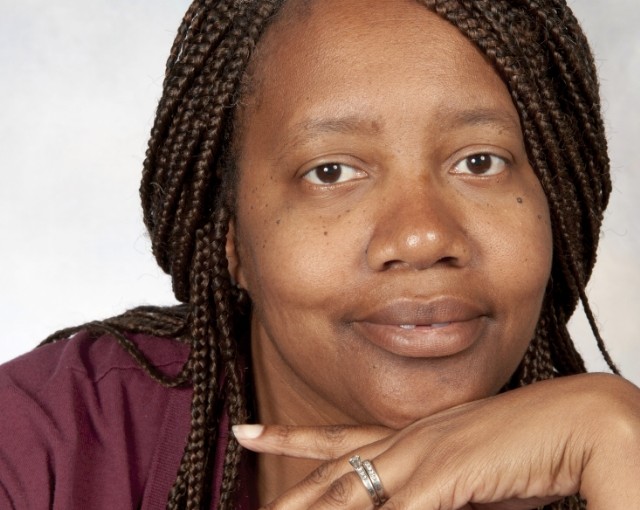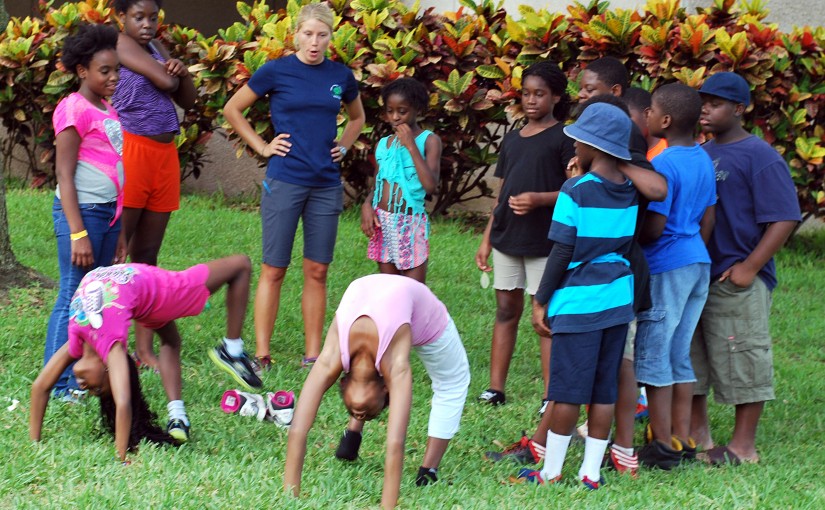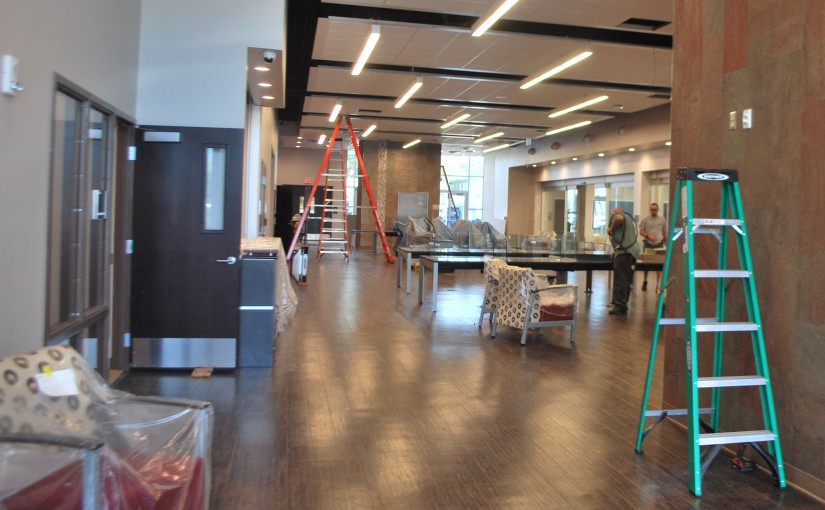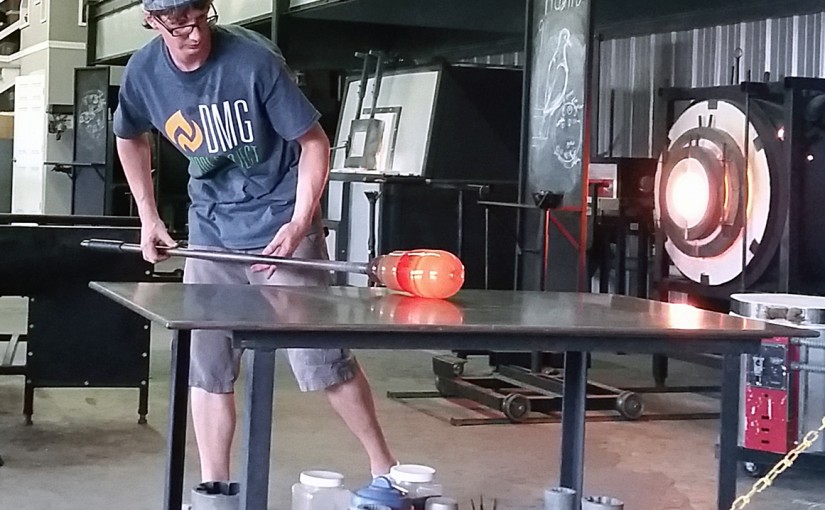
For eight years, local football standout Louis Murphy Jr. and his 1st Downs 4 Life organization have conducted a one-day camp at Lakewood High School.
BY ANDREW CAPLAN
NNB Student Reporter
“Life’s most persistent and urgent question is: What are you doing for others?”
That quotation from Dr. Martin Luther King Jr. is one that Louis Murphy Jr. said he lives by every day.
So when the Tampa Bay Buccaneers wide receiver stepped back onto Lakewood High School’s football field earlier this month, he had one mission in mind: to give back.
It’s a responsibility that was instilled in him early in life by his father, the Rev. Louis M. Murphy Sr., and mother, Filomena Murphy, who died of breast cancer in 2008.
For eight years, Murphy Jr.’s organization, 1st Downs 4 Life, has conducted a one-day football and cheerleading camp at the high school where he once starred. The wide receiver and his crew spend the day with area youths, teaching both fundamentals and life lessons.
The free camp was filled with youngsters ages 8 to 18. Their mentors were former collegiate and professional athletes like Gerard Warren, a former defensive tackle who was the NFL’s No. 3 overall draft pick in 2001; former USF safety Jerrell Young; Cornell Green, a former offensive tackle who won a Super Bowl with the Bucs in 2002; and Henry Lawrence, a former offensive lineman who has several Pro Bowl honors and three Super Bowl rings.

Murphy’s father, the Rev. Louis M. Murphy Sr. (in orange shirt), leads some of the high school campers in prayer.
“I think we should always give back and lend a helping hand,” said Murphy, 28.
He believes it’s his job as a professional athlete to be a role model for young people. And they agree.
“It lets us know that there are people out here that still care about the black community and the kids around it,” said Nyquel Alexander, a 2015 Lakewood graduate who plans to play in college. “This camp helped me become a man and make smart choices while I was in high school.”
Indian Rocks Christian running back Theo Anderson said the camp is “very important” to him, too.
“I think, honestly, this camp is about 60 percent life and 40 percent work,” he said.
Anderson, 16, said he is considering attending the University of Wisconsin after he graduates in January. He said he is following the instructions at the camp: Do well in school and dream big.
* * * * * * * *
Murphy started 1st Downs 4 Life in 2008, shortly after his mother passed away. He said he remembers her working with some of the most troubled youths in the area at a juvenile delinquent center. He once asked her why.
Her response was that the kids needed someone to encourage them and be a positive influence, Murphy said. “She had a heart for kids that were troubled.”
Now with the help of volunteers, his goal is to give youngsters the same kind of encouragement.
“We coach character and discipline,” he said. “Being a stand-up guy in the community, your classroom, on your little league football team, high school football team and being a leader. Those are the things we really preach to these kids.”

Former collegiate and NFL linebacker Juan Long, shown coaching two campers, says Murphy Jr. has proven that “if you work hard and stay committed to your craft, anything is possible.”
Volunteer coach Justin Black, a former cornerback at West Liberty University, said he has been with the camp since year one, when he was in high school. Black, 23, spent his afternoon coaching the defensive backs.
“I learned from my own experiences that putting emphasis on the little things will help you achieve great things on and off the field,” he said. “Just spending time plays a huge impact in a child’s life.”
First-time camp volunteer Juan Long, a former Mississippi State and NFL linebacker, said even though it is a football camp, the goal is to see the attendees become great citizens in the St. Petersburg area.
Although going pro is unlikely for most kids at the camp, Long said, it’s not impossible. Defensive end Dante Fowler, a 1st Downs 4 Life alum, was recently the No. 3 overall selection in the 2015 NFL draft.
“A lot of times kids see people on TV they can’t really relate to it,” Long said. “But by Louis being here, he’s showing them directly that if you work hard and stay committed to your craft, anything is possible.”
The camp ended with a few words of wisdom from those close to Murphy.
Green told the young athletes to make good life decisions. Do your education right, he said. “Invest in you.”
Warren told them to have respect for others as well as themselves.
And Murphy’s father, the senior pastor at Mt. Zion Progressive Missionary Baptist Church, urged them not to let others talk them into anything, but rather follow their own desires.
* * * * * * * *

Murphy Jr., says his mother, who died in 2008, and his father (left) taught him the importance of giving back. “The success of these kids inspires me and motivates me to keep going,” he says.
Unlike past years, the camp did not host its annual basketball game on the same weekend.
Murphy Jr. said he plans to have future events spread throughout the year to offer more guidance and build stronger relationships with the youngsters.
Before year’s end, he said, he plans to host a backpack giveaway, a toy drive and a charity kickball game and start a mentoring program. He wants to offer guidance to not just football players, but entire communities.
On July 25, 1st Downs 4 Life will host another football camp at Stetson University in DeLand.
“It’s a joy and a blessing to pour into these kids,” Murphy said. “The success of these kids inspires me and motivates me to keep going.”













 Courtesy of Five Deuces Galleria
Courtesy of Five Deuces Galleria Melissa Harasz
Melissa Harasz

 Maureen McCarthy
Maureen McCarthy McCarthy likes to paint landscapes, like this scene of a Florida sunset.
McCarthy likes to paint landscapes, like this scene of a Florida sunset.
 Sean Alton
Sean Alton

 Jim Corp
Jim Corp


 Rebekah Davila | NNB
Rebekah Davila | NNB Rebekah Davila | NNB
Rebekah Davila | NNB Rebekah Davila | NNB
Rebekah Davila | NNB Candice Reshef | NNB
Candice Reshef | NNB Rebekah Davila | NNB
Rebekah Davila | NNB Candice Reshef | NNB
Candice Reshef | NNB Zachary Gipson-Kendrick | NNB
Zachary Gipson-Kendrick | NNB Rebekah Davila | NNB
Rebekah Davila | NNB Zachary Gipson-Kendrick | NNB
Zachary Gipson-Kendrick | NNB Rebekah Davila | NNB
Rebekah Davila | NNB Candice Reshef | NNB
Candice Reshef | NNB Rebekah Davila | NNB
Rebekah Davila | NNB Rebekah Davila | NNB
Rebekah Davila | NNB Lauren Hensley | NNB
Lauren Hensley | NNB Lauren Hensley | NNB
Lauren Hensley | NNB Rebekah Davila | NNB
Rebekah Davila | NNB Rebekah Davila | NNB
Rebekah Davila | NNB
 Candice Reshef | NNB
Candice Reshef | NNB

















